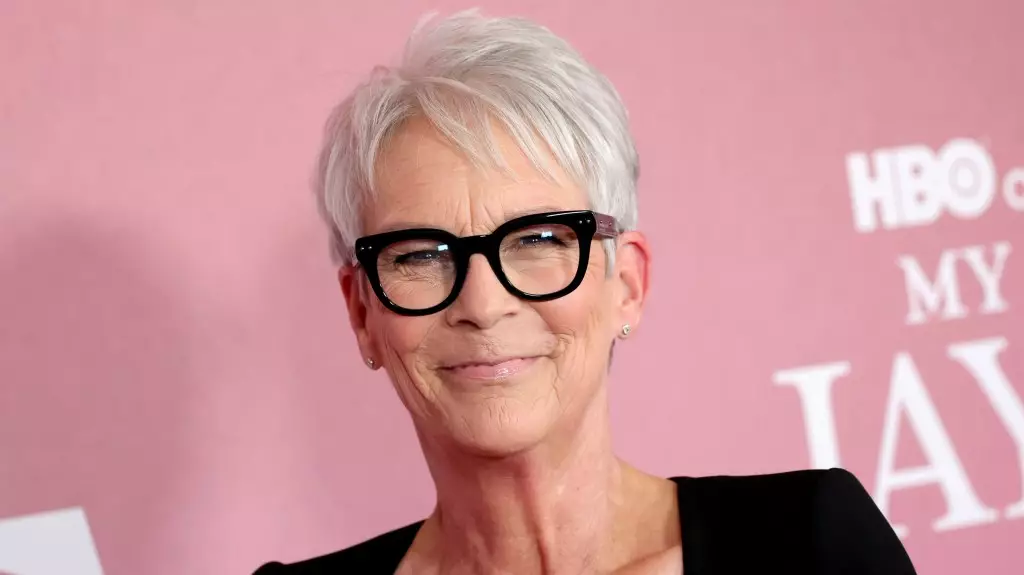Hollywood perpetuates a dangerous myth: that aging, especially for women, is a liability rather than a natural part of life’s journey. For decades, countless actors have seen their careers and self-worth diminish as they cross an arbitrary, often superficial age threshold. The recent candid reflections by Jamie Lee Curtis expose a systemic issue that strips away talent and identity in favor of youth and endless novelty. This isn’t merely a personal lament; it is a mirror held up to an industry that desperately needs introspection. When industry icons like Janet Leigh, Curtis’s own mother, are discarded the moment they no longer fit the commercial ideal, the message is clear: beauty and value are fleeting commodities, not human rights.
Curtis’s honesty underscores a broader societal problem—the fetishization of youth—fueling a never-ending cycle of plastic surgeries, filters, and superficial modifications that distort genuine self-expression. Her critique is a reminder that Hollywood’s obsession with eternal youth does not just harm individual actors; it devalues the authentic human experience. We are witnessing a cultural production that celebrates aesthetics over authenticity, where aging is taboo, and natural beauty is sacrificed on the altar of commercial profit.
The Cost of Cosmetic Culture and the Dehumanization of Women
Curtis’s outspoken opposition to cosmetic surgery as a form of cultural genocide hits a nerve because it touches on a deeper societal failure: the commodification of women’s appearances. The rise of the “cosmeceutical industrial complex” has fostered a relentless pressure—internalized by countless women—to conform to impossible standards of beauty. Her dramatic visual statement, the oversized wax lips, is a bold symbol of resistance against this tide. It’s a visual protest against a world where women are bombarded with messages that their worth is contingent upon how closely they can mimic youth’s fleeting perfection.
Her acknowledgment of having undergone plastic surgery at 25—and her subsequent regret—reflects the internal conflict faced by many women caught in this trap. The industry benefits from their insecurities, promises quick fixes, and profits from the disfigurement of genuine self-confidence. Curtis’s use of the word “genocide” is provocative but accurate; an entire generation has been systematically disfigured mentally and physically by unrealistic beauty standards and cosmetic procedures. These social pressures stunt genuine aging, leading to a homogenized, superficial ideal that is increasingly manipulated through AI technology. Filters on social media have transformed from fun embellishments into dangerous gatekeepers of authenticity, further eroding self-esteem.
The Industry’s Role in Promoting Youth Over Substance
Hollywood’s fixation on youth isn’t just a superficial trend—it is a calculated business model. Younger actors generate more publicity, and their physical appearance is often prioritized over talent or depth. The industry’s reluctance to invest in aging actors, especially women, fuels a cycle of disposability that harms careers and mental health. Curtis’s decision to “self-retire” reveals a sobering truth: the industry’s rejection is often inevitable for those over a certain age, and many choose to leave before they’re forcefully pushed out.
Her critique extends beyond personal bitterness. It is a plea for change rooted in fairness and respect. The entertainment industry has the power to challenge society’s shallow perceptions but often chooses to reinforce them to maximize profits. By highlighting her own family’s experience, Curtis demonstrates how cultural values around aging influence attitudes across generations. When the industry discards icons like her mother after their prime, it perpetuates a cultural narrative that aging equals irrelevance—a message that seeps into societal consciousness, contributing to ageism and the decline of authentic representation.
What Needs to Change in Society and Hollywood
Real change requires a cultural reset. Hollywood must re-evaluate its standards and recognize aging as a valuable part of human life—something that enriches storytelling, not diminishes it. The industry can begin by investing in meaningful roles for older actors, fostering diversity in age and appearance, and rejecting superficial beauty standards driven by cosmetic and technological manipulation.
Moreover, society must challenge the ingrained obsession with youthfulness. A move toward body positivity, acceptance of natural aging, and critical engagement with social media filters would significantly reduce the societal pressure to conform unnecessarily. Education plays a crucial role here: fostering awareness about the manipulative forces behind cosmetic surgery and AI filter culture can empower individuals to embrace their natural selves.
Ultimately, this crisis isn’t solely about Hollywood—it’s about our collective values. We must shift from valuing appearances to appreciating authenticity, experience, and wisdom. Hollywood, as a powerful cultural arbiter, has a responsibility to lead this change rather than perpetuate illusions that devalue the aging process. The question is whether the industry and society are willing to confront the uncomfortable truths of vanity and superficiality to create a culture that respects human dignity at every age.



Leave a Reply